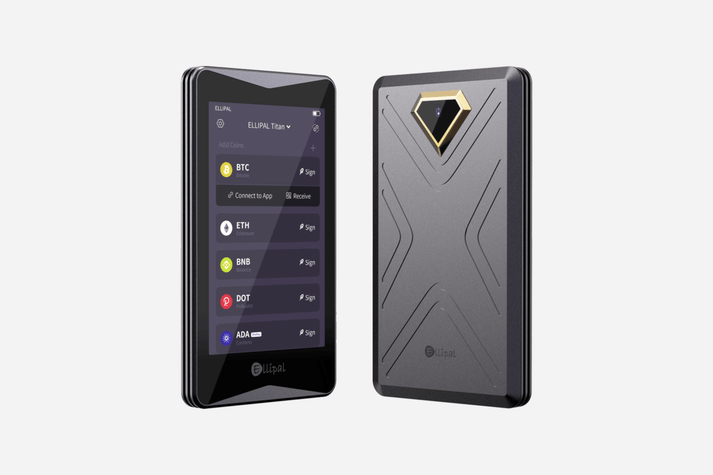Unlock the Secrets of Cold Wallets: The Ultimate Guide to Secure Cryptocurrency Storage!
Cryptocurrency has transformed the way we think about and handle money, offering a decentralized and digital alternative to traditional currencies. However, with this innovation comes the critical need for secure storage solutions. As digital assets become more valuable, the question of how to protect them becomes paramount. This is where cold wallets come into play. A cold wallet refers to a method of storing cryptocurrencies offline, making them less susceptible to hacks and cyber threats that plague the online world. In this article, we will delve deep into the concept of cold wallets, their functions, advantages, and essential practices to ensure your crypto assets are secure.

Understanding Cold Wallets
Cold wallets are storage solutions for cryptocurrencies that are not connected to the internet, which distinguishes them from hot wallets that are online and accessible at any time. This offline status significantly reduces the risk of hacking and unauthorized access. There are several types of cold wallets available: hardware wallets, which are physical devices that store private keys; paper wallets, which are simply printed documents containing private and public keys; and even certain types of USB drives designed explicitly for crypto storage. Each type serves the primary function of keeping cryptocurrencies secure by isolating them from online threats, making them a preferred choice for long-term investors and those holding significant amounts of digital assets.
Advantages of Using Cold Wallets
The primary advantage of cold wallets lies in their enhanced security features. Since they are offline, cold wallets protect your cryptocurrencies from online attacks, phishing scams, and malware, which are prevalent in the digital landscape. For instance, a friend of mine who invests in cryptocurrencies had a harrowing experience when his hot wallet was hacked, resulting in the loss of a substantial portion of his investments. Since then, he has switched to a cold wallet and has found peace of mind knowing that his assets are safeguarded from cyber threats. Cold wallets also offer the advantage of being immune to computer viruses that might target hot wallets, providing an extra layer of security for your valuable crypto holdings.
How to Set Up a Cold Wallet
Setting up a cold wallet involves a few essential steps. First, you need to choose the type of cold wallet that best suits your needs, whether it's a hardware wallet, paper wallet, or USB drive. After acquiring the wallet, follow the manufacturer’s instructions carefully to set it up. During installation, you'll be prompted to create a secure PIN and generate recovery phrases—these are vital for accessing your wallet in case of loss or damage. It's crucial to write down these phrases and store them securely, as losing them could mean losing access to your cryptocurrencies forever. Additionally, ensure that your device is free from malware before transferring any assets to avoid compromising your wallet's security.
Best Practices for Cold Wallet Storage
Maintaining the security of your cold wallet requires adherence to best practices. Regularly update the firmware of your hardware wallet to protect against vulnerabilities. Physical security is equally important; ensure your cold wallet device is stored in a safe location, away from potential theft or damage. Backup strategies are also essential; consider creating multiple copies of your recovery phrases and storing them in different secure locations. This way, even if one copy is lost or destroyed, you still have access to your cryptocurrency assets. Lastly, be cautious about sharing information related to your wallet; confidentiality can prevent potential breaches.
Common Misconceptions About Cold Wallets
Despite their advantages, several misconceptions exist about cold wallets. One common myth is that cold wallets are entirely immune to threats. While they offer significant protection against online attacks, physical theft or loss can still occur. Another misunderstanding is that cold wallets are complicated to use; in reality, once set up, they are straightforward and user-friendly. Many believe that cold wallets are only for tech-savvy individuals, but with user-friendly interfaces and detailed instructions, anyone can successfully manage a cold wallet. Understanding these realities helps to clarify the true benefits of using cold wallets for cryptocurrency storage.
Securing Your Crypto Assets with Cold Wallets
In summary, cold wallets provide a secure and reliable method for storing cryptocurrencies, safeguarding them from the myriad of cyber threats present in today’s digital world. By understanding what cold wallets are, their advantages, and how to set them up, you can take proactive steps to protect your investments. As the crypto landscape continues to evolve, implementing cold wallet solutions for your assets can offer the peace of mind needed to navigate this exciting yet risky realm. Consider making the switch to a cold wallet and secure your digital wealth today.
